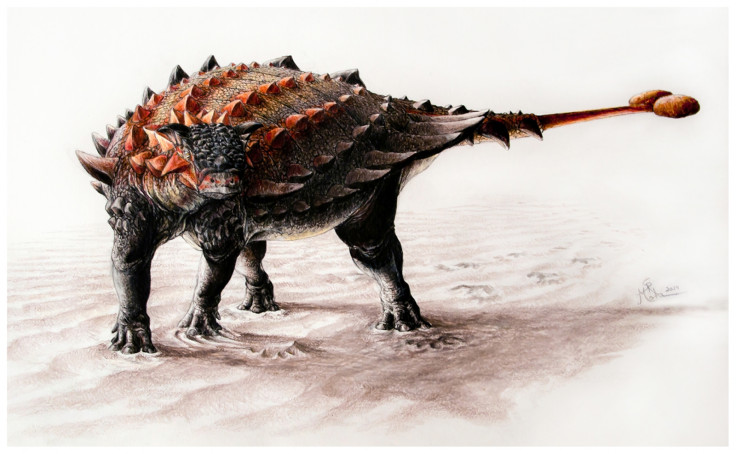Spiked Armoured Dinosaur 'Ziapelta' Discovered In New Mexico Has Canadian Cousins

An armoured dinosaur with spikes has been discovered in New Mexico, and is thought to be closely related to similar dinosaurs in Alberta, Canada.
A paper published in the journal PLOS ONE by the University of Alberta states that a new species of ankylosaurid called Ziapelta sanjuanensis was uncovered in the Bisti/De-na-zin Wilderness area three years ago.
Ziapelta is distinctive from other ankylosaurs because of the tall spikes which sit on the back of its neck and its different shaped skull.

"The horns on the back of the skull are thick and curve downwards, and the snout has a mixture of flat and bumpy scales — an unusual feature for an ankylosaurid," the paper's co-author, Victoria Arbour said. "There's also a distinctive large triangular scale on the snout, where many other ankylosaurids have a hexagonal scale."
Not many species of ankylosaurid are known from the southern part of the United States; however, Alberta was home to at least five different species from between 76 to 66 million years ago.
"We were really excited by both its familiarity and its distinctiveness—we were pretty sure right away we were dealing with a new species that was closely related to the ankylosaurs we find in Alberta," said Arbour.
The Ziapelta is from the late Cretaceous period and is thought to fill a gap in the ankylosaurid timeline.
A large, inland sea separated North America at the time and Alberta and New Mexico were both situated on its shoreline.
Ankylosaurid fossils have been found in several of the rocky formations in Southern Alberta, but there is a gap in the fossil record, as none have been unearthed in the lower part of an area known as the Horseshoe Canyon Formation.
"The rocks in New Mexico fill in this gap in time, and that's where Ziapelta occurs," says Arbour.
The Ziapelta could have belonged to a group of southern dinosaurs, but researchers are keen to search for fossils in the north to see if they did in fact originate from there.
"We should be on the lookout for Ziapelta fossils in the Horseshoe Canyon Formation in the future," said Arbour.
© Copyright IBTimes 2025. All rights reserved.





















